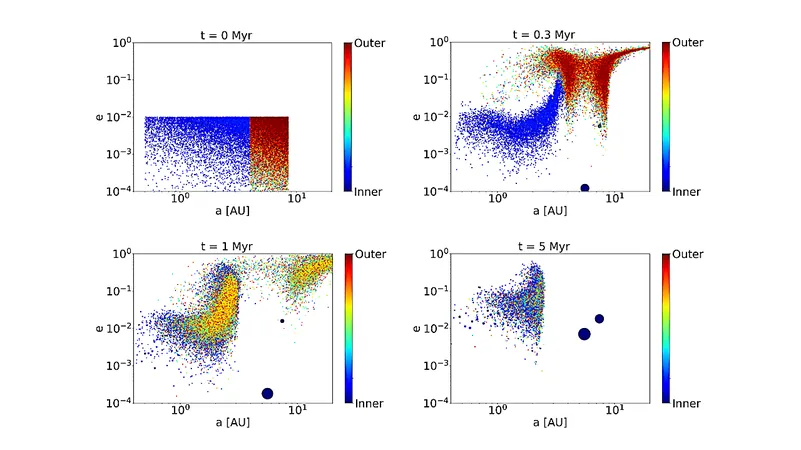
The Intriguing Dynamics of Terrestrial Planet Formation Amidst Giant Planet Evolution and Migration
2024-10-01
Author: John Tan
Terrestrial planet formation (TPF) has posed a complex challenge to scientists for decades, as models struggle to accurately represent the intricate orbital arrangement of the inner planets in our solar system. Recent research by Ramon Brasser, utilizing a sophisticated modeling tool known as GENGA, sheds new light on the influence of gas giant formation and migration on TPF during the pivotal first five million years of the solar system's history.
Brasser's dynamic model examines how the growth of gas giants, particularly Jupiter and Saturn, interacts with the existing population of planetesimals—small celestial bodies that coalesced to form the planets. Within this model, the masses, sizes, and orbits of the gas giants are precomputed and integrated, while thousands of self-gravitating planetesimals, ranging from 0.5 astronomical units (au) to a staggering 8.5 au, contribute to the creation of terrestrial planets.
An essential aspect of this study is the mass distribution within the inner and outer planetesimal discs, which collectively hold around 5 Earth masses. Surprisingly, the model shows that after 5 million years of evolution, about 10% to 25% of the mass from planetesimals in the area occupied by Jupiter and Saturn is effectively transferred into the inner solar system. This finding exceeds the predictions of traditional cosmochemical models, revealing a significant compartmentalization of materials. There is a pronounced composition gradient found in the inner solar system, meaning that the material closest to the Sun has a different make-up compared to that further out, indicating a rich and varied history of accretion.
The presence of gas giants profoundly alters the landscape of the solar system. The scattering of planetesimals due to the gravitational influence of Jupiter and Saturn introduces diverse isotopic compositions to the forming terrestrial planets. Interestingly, the planetesimal disc surrounding these giants is hypothesized to have been relatively light, weighing in at around 1 Earth mass. Furthermore, the inner planetesimal disc likely did not extend beyond 2 au, which raises intriguing questions about the formation of Mars. If the inner disc was limited, it suggests that the current asteroid belt may not have possessed the substantial mass that once predicated theories of its existence.
Given this groundbreaking research, the implications for our understanding of terrestrial planet formation are profound. As scientists continue to piece together the puzzle of our solar system's formation, this work may ultimately help explain the unique characteristics of planets like Earth and Mars, as well as the mysterious asteroid belt.
Stay tuned for further updates in this fascinating field of study, as researchers remain devoted to unraveling the mysteries of our cosmic origins!




 Brasil (PT)
Brasil (PT)
 Canada (EN)
Canada (EN)
 Chile (ES)
Chile (ES)
 España (ES)
España (ES)
 France (FR)
France (FR)
 Hong Kong (EN)
Hong Kong (EN)
 Italia (IT)
Italia (IT)
 日本 (JA)
日本 (JA)
 Magyarország (HU)
Magyarország (HU)
 Norge (NO)
Norge (NO)
 Polska (PL)
Polska (PL)
 Schweiz (DE)
Schweiz (DE)
 Singapore (EN)
Singapore (EN)
 Sverige (SV)
Sverige (SV)
 Suomi (FI)
Suomi (FI)
 Türkiye (TR)
Türkiye (TR)